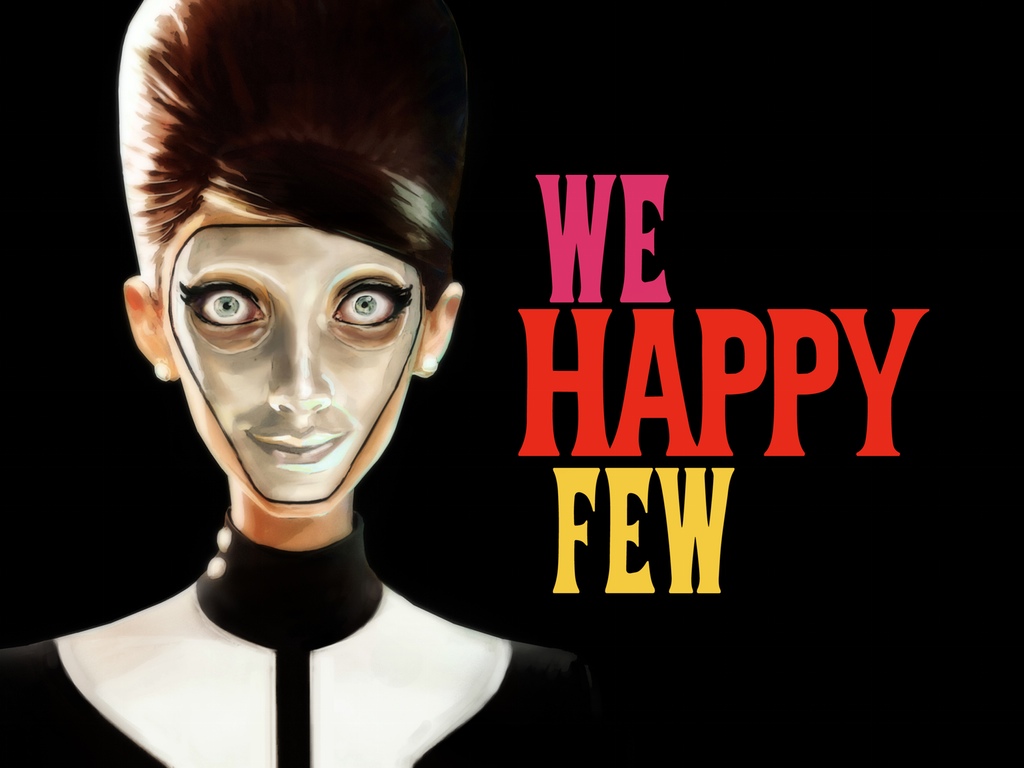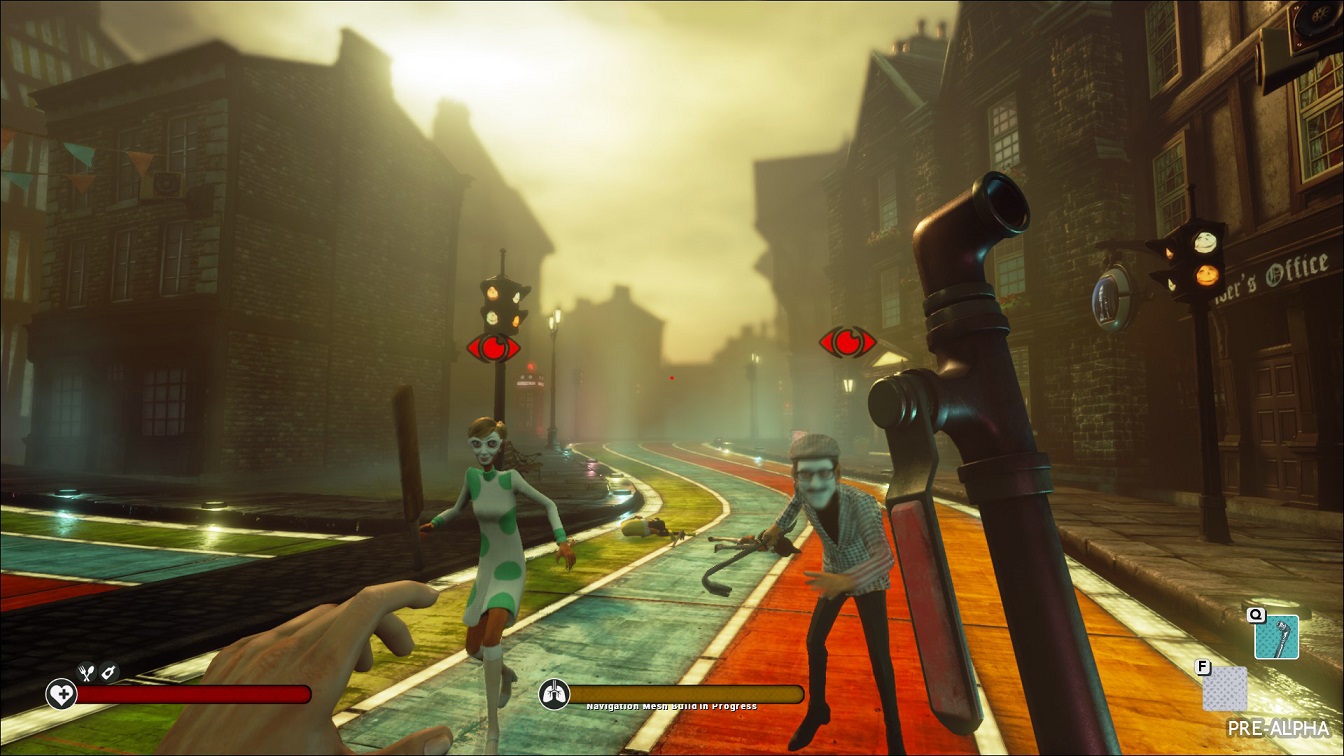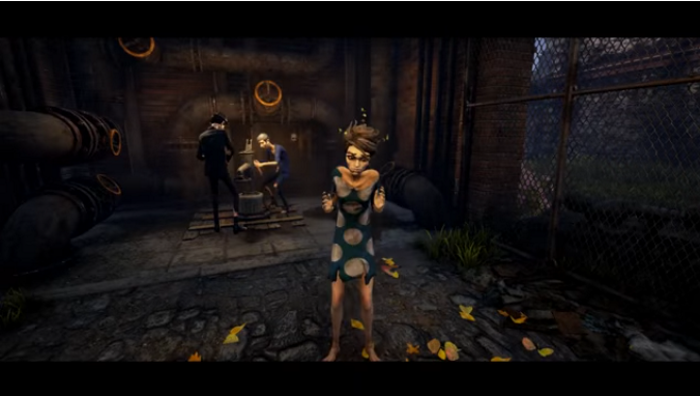The We Happy Few Kickstarter campaign is the pinnacle of success. Developer Compulsion Games hit every note. They had a compelling idea, gameplay footage from the start, and the plans for development remain clearly detailed. The game’s great art style and Compulsion’s pedigree didn’t hurt either. When an early access version debuted on Steam in July 2016, hopes were high for the open world survival game.
But it’s early access debut crushed those hopes with surgical precision. It was a failure so complete many felt the game would never recover.
We Happy Few pitched itself as a survival game with a purpose. The survival game genre has long clogged the arteries of gaming, and that’s doubly so on Kickstarter. What set this apart from all the others though, was Compulsions Game’s great work. They had already worked on the game for some time before making their pitch. This is more than a case of backers rewarding a developer naive enough to work for free, however. We Happy Few looked like a great game. A unique art style, story component, and tongue-in-cheek humor carried the Kickstarter to $250,000.
Cracking
The cracks didn’t appear until it hit early access. Maybe it’s a case of backers and first time buyers alike falling for the hype. We Happy Few received a critical mauling rarely seen even for many early release games. The common criticism (and there were many) was that the survival elements were too overbearing. Your character got too tired, hungry, and thirsty too quickly. Randomly generated objects meant some vital quests were impossible to complete. There was no sign of what you needed to do, or where to go.
Worst of all was the lack of a story mode. One month before its early access launch, Compulsion Games appeared at the Microsoft conference at E3 with a trailer. A trailer which only featured the story mode. This led to false expectations and customers feeling like they didn’t get what they paid for.
We covered all of this in our video several months ago, which you can watch below. Whatever goodwill We Happy Few garnered was gone. Its first impression must have been a bitter pill for Compulsion Games to swallow. There’s no question they lost a lot of backers and potential customers. Now, seven months on, it’s time we take a look at the game with fresh eyes. Has Compulsion picked up the pieces and glue them back together, or is it a lost cause?
Fighting
Many developers would roll over after their game gets hit so hard so early on. Compulsion continue toiling away on We Happy Few, tweaking, replacing, and adding new features where necessary. Tempted as though you may be to think this is akin to rearranging the deck chairs aboard the Titanic, but consider this. The game currently sits at a “Very Positive” rating on Steam, and the only two recent negative reviews read “bad bad game when i died cant save” and “when I saw the trailer I thought of bioshock play style, when I played the game I was Bio shocked.”
Steam reviews aren’t the most reliable in the world, many “positive” reviews are written in jest, and negative ones are left for any number of ludicrous reasons. But it’s hard to imagine all the recent influx of positive reviews are sarcastic, especially with the volume of updates the developers have been releasing on a monthly basis.
Starting almost immediately, Compulsion Games were seeking feedback from backers and early buyers. There was a flurry of activity on their official forums, most of which the developers responded to. Along with a couple of surveys sent out to backers about certain gameplay systems, it was clear Compulsion knew the game wasn’t working, and they wanted to hear from their customers about what could be done to fix it.
Updating
As with any early access game, they started releasing updates almost immediately. The usual bug fixes, new areas to explore, and rebalancing addressed some of the biggest complaints, but the big changes didn’t come until December. The update, titled “Clockwork,” is less of a few additions and changes as it a total overhaul.
You can see the full change log on their website, but it’s a long list. The first, most notable change is how the game tracks quests. Instead of tracking them based on scripts, there’s now a hard-coded system that can track where the player is, what they have in their inventory, and can accurately tell the player what they need to do.
NPC’s have also been redone, including a new conversation system that pauses the game, allowing for more dialog and better animations. This also prevents other NPC’s or even the player from accidentally distracting the NPC you’re conversing with and ruining a quest. They also have a new “puppet system,” which is another hard-coded change to their AI patterns. Instead of randomly wandering around the map and sleeping or fighting for no reason, they all have scripted behaviors, which as the blog post states, eliminates “all manner of crazy shit” the NPC’s got into.
Compulsion has also made objectives and NPC interaction much more obvious. While you may be inclined to think they’re “dumbing down” their systems, keep in mind that the biggest complaint from everyone who played We Happy Few was that it was too obtuse. By introducing a new manual quest tracking system, a new starting location that better explains how to craft items and survive, and new dialog, there’s less of a guessing game and more of survival simulator.
Saving
Between this colossal updates and other smaller ones that experimented with the survival meters, there’s no question We Happy Few is a better game now than it was in July 2016. But is it yet a good game, and will it continue getting better before its final release? For the latter, only time will tell. For the former, that’s hard to say. Not many people seem to be playing much anymore. The buzz that once surrounded the former jewel of Kickstarter has died down considerably.
That’s where we come back to our previous video. Releasing a game on early access has its benefits; it allows a game to improve over time, allowing it’s developers to get feedback directly from those playing the game. But We Happy Few is one example how it can all go so wrong, so quickly. It might be a better game than it ever was prior, but that hardly matters if its reputation remains in tatters.
The world of Wellington Wells might have a bright future ahead of it, but unless Compulsion Games can grab hold of the spotlight once again, that light might just be the end of the tunnel. What can they do to take center stage again? They can start by releasing the story mode, or at least part of it. The story could be divided up into episodes since the prologue is already available. The one thing all these indie survival games have in common is the lack of any form of narrative, it’s an open sandbox to walk around in until you die or get bored and quit, even We Happy Few. That story mode, what originally set it apart from so many other survival games, is exactly what Compulsion needs right now.
To Be Continued
The story mode will grab people’s attention once again, the same way that ill-advised E3 trailer did. Showing off that Bioshock aesthetic is what will turn heads. If the rest of the story is as good as its set up, the positive reviews will only help. Until then, not many outside it’s backers will care much about changes to AI behavior.
The longer Compulsion take with the story mode, the longer they risk turning their game into The Short Dark, which, after four years and many promises, still hasn’t gotten its first episode of story content, let alone the entire experience. As a result, nobody remembers the game, to the point you probably didn’t remember it’s actually called The Long Dark.
These developers deserve credit, whether they can release the story mode in a timely manner or not. Instead of giving up on the game and releasing it as-is, they continued pouring time and money fixing their mistakes. They haven’t given up, and as cheesy as that sounds, it’s much appreciated. Even if We Happy Few is a flop, they’re worth keeping an eye on.








I remember The Long Dark. You can’t pull the wool over my eyes Griffiths.
[…] dystopian survival game opens the door for an abundance of stories the movie could tell. What’s we’ve seen of the game is just the tip of the narrative iceberg. While We Happy Few focuses on the experiences of its […]